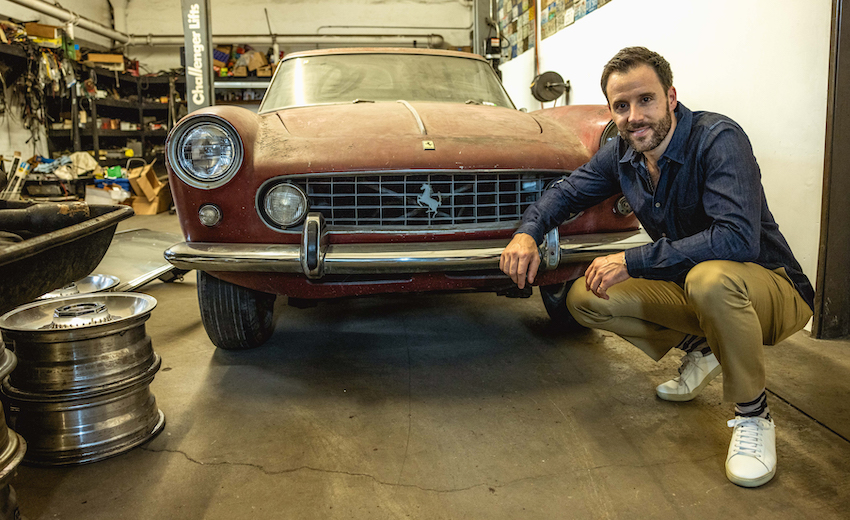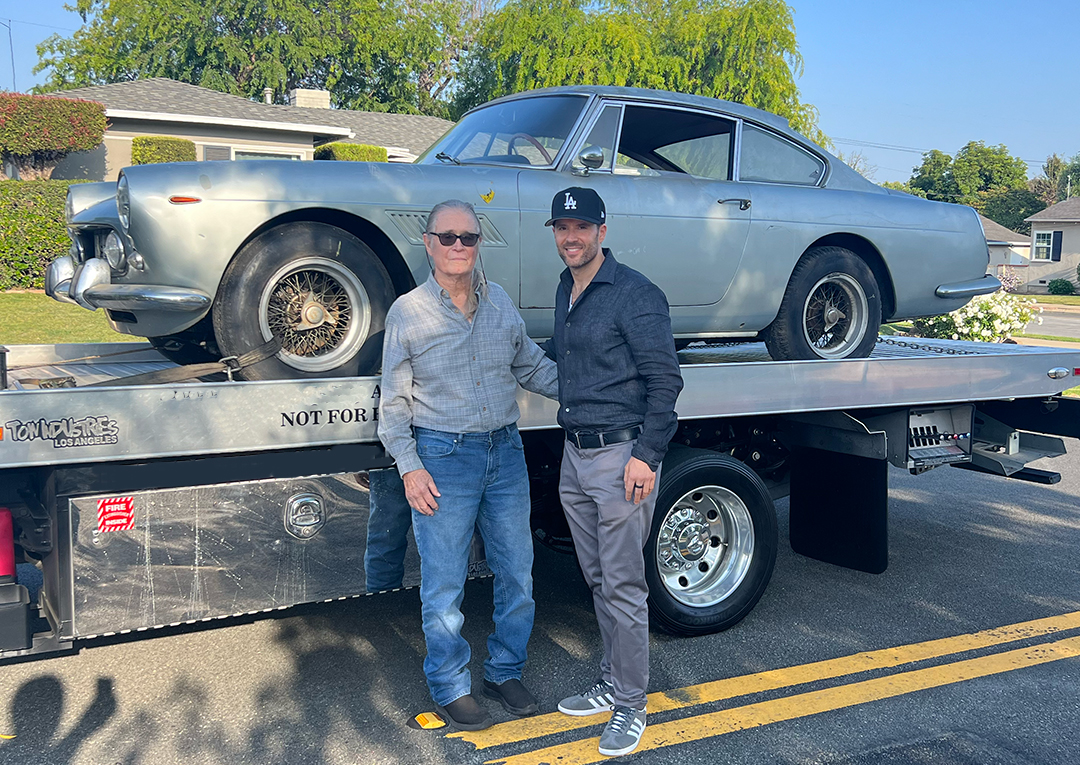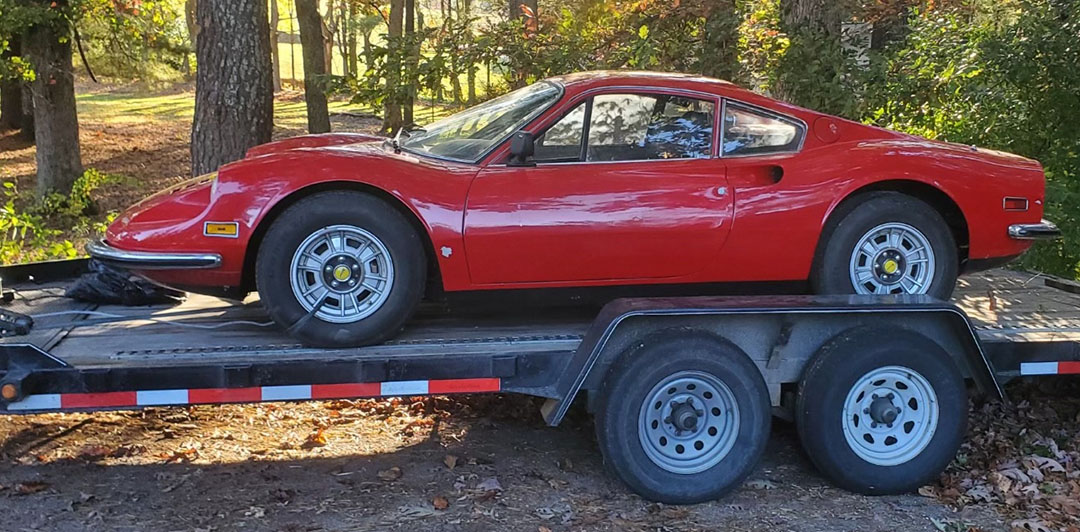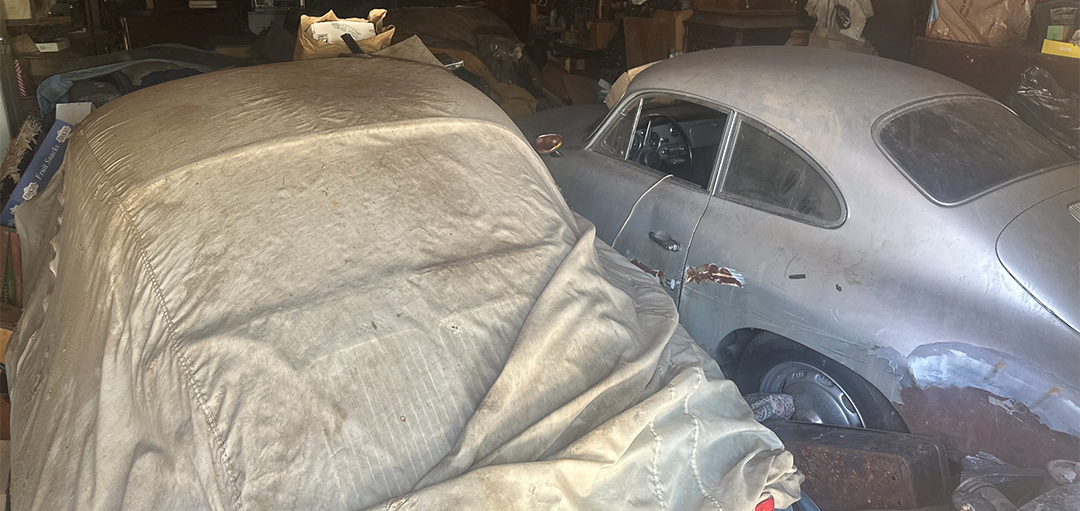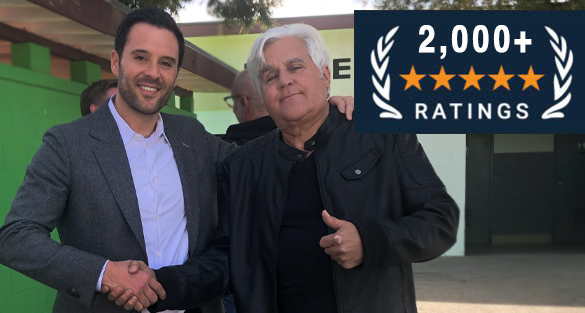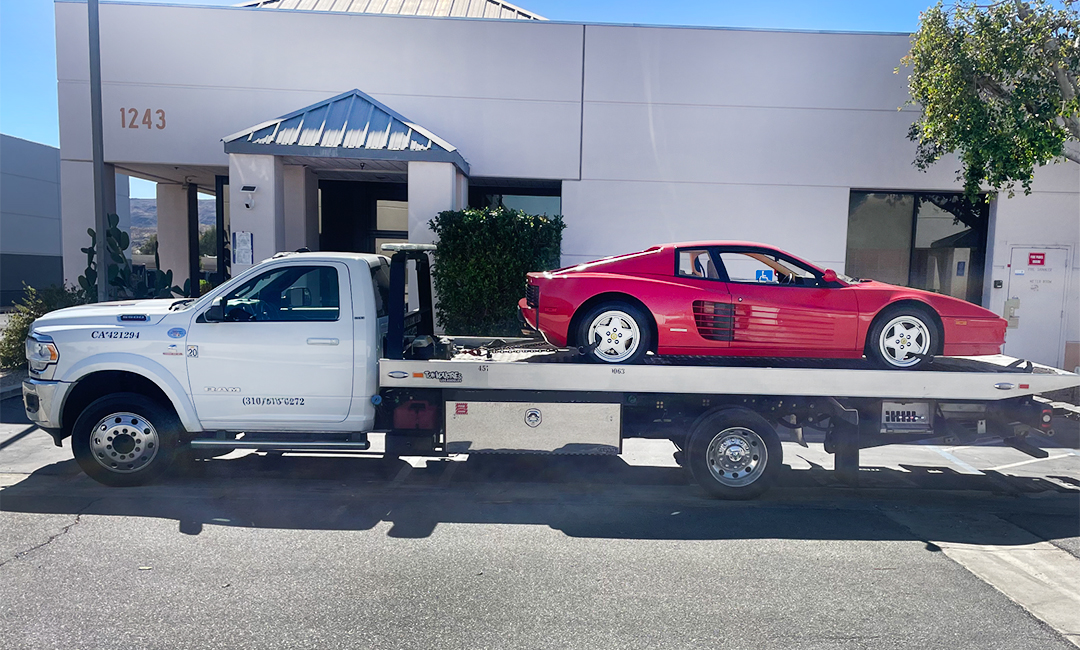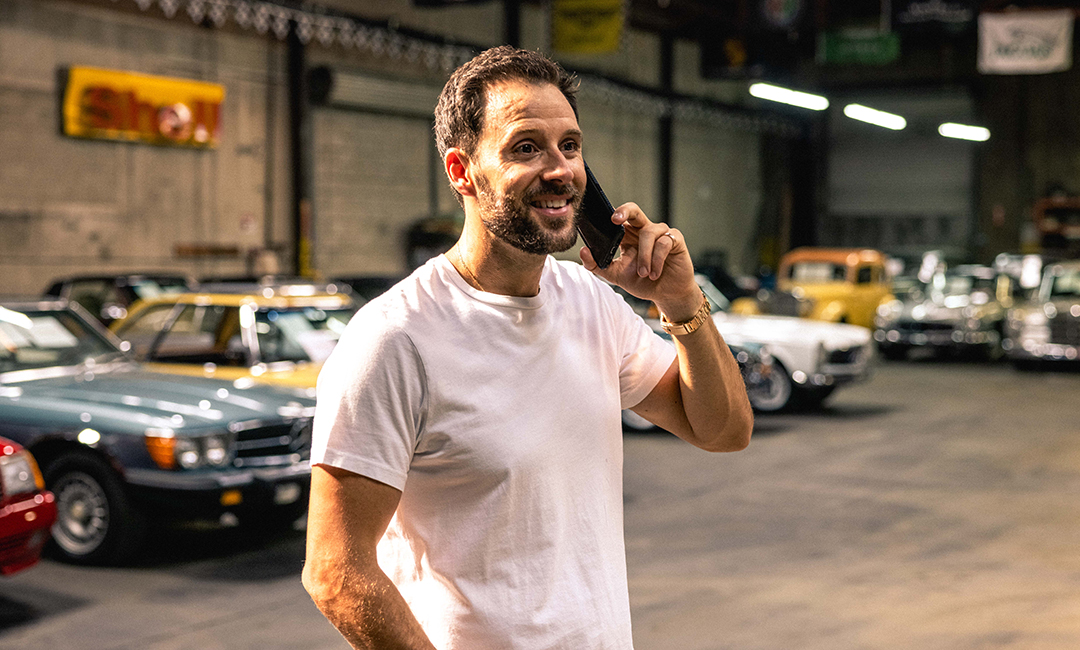Selling A Classic Ferrari Project Car?
The world of Ferrari project cars presents a unique challenge for owners. Whether you’ve inherited a dust-covered 308 GTB that hasn’t run in decades, have a partially restored Testarossa sitting in your garage, or simply want to move on from your 250 GT project to make room for new adventures, finding the right buyer can seem as complex as the twelve-cylinder engine in your Ferrari’s engine bay.
Looking to sell a classic Porsche, Ferrari, Mercedes, Jaguar, or any of the car makers listed (HERE)?
As a dedicated Ferrari collector and buyer for over 20 years, I’ve seen firsthand how the market for project Ferraris has evolved. While these Italian thoroughbreds have always commanded respect, today’s market presents both opportunities and challenges for sellers. Production numbers are fixed, restoration costs continue to rise, and finding a buyer who understands the true value of your prancing horse—especially in project condition—requires expert knowledge.
At Alex Manos, we’ve built our reputation on being transparent, efficient, and fair when purchasing classic Ferraris in any condition. From coveted 250 series cars to the angular 1980s Testarossas and into the modern classic territory of the F355, we purchase Ferrari projects nationwide with immediate payment and pickup—no waiting for auction dates, no wondering if your reserve will be met, and absolutely no hidden fees or commissions.
Unlike the uncertainty of consignment deals or the anonymous nature of online marketplaces, we provide a clear, straightforward path to selling your Ferrari project. Whether your classic has been sitting untouched for decades, is mid-restoration, or simply needs mechanical attention, we purchase Ferraris in all conditions—from museum-quality examples to parts cars that haven’t run in years.
Our expertise spans the full spectrum of collectible Ferraris, including models like the elegant 250 GTE, the iconic Dino 246 GT, the timeless 308 GTB/GTS made famous by television, the flat-12 powered Testarossa and 512 TR, and the increasingly collectible F355. Each model presents its own valuation considerations, and our decades of experience ensure you receive a fair market offer based on current conditions.y.
Let’s walk you through exactly how my process works, why so many classic car owners choose my services over auction alternatives, and share real stories from sellers just like you who decided that having someone bring a trailer for an immediate purchase was the right choice for their cherished classics.
Ready to sell your classic car without the wait? Let’s explore how I can bring a trailer to your location as soon as today.
Selling? Call 877-912-0007 or email [email protected]
Recent testimonials: ( link )
How to Value a Ferrari Project
When it comes to determining the value of an unrestored Ferrari project car, the process requires significantly more nuance than simply checking auction results or price guides. As someone who has evaluated thousands of classic Ferraris over the past two decades, I’ve developed a methodology that accounts for the unique factors that influence project car values—particularly for those special Maranello machines that haven’t turned a wheel in years.
Valuation Factors
Originality and Numbers-Matching Status
For Ferrari projects, originality reigns supreme. A Ferrari with its original engine (matching the chassis number) can command 30-50% more than one with a replacement powerplant. This is especially critical for models like the 250 series, 275 GTB, and early Dinos, where original engines are increasingly scarce.
When evaluating your project Ferrari, locate the chassis and engine stamps to verify numbers-matching status. For many models, especially V12 Ferraris from the 1960s and 1970s, the presence of the original engine is often the single most valuable component of the entire car.
Completeness Assessment
The difference between a “complete project” and a “partial project” can represent tens of thousands—sometimes hundreds of thousands—of dollars in value. Ferrari-specific components are notoriously difficult to source, particularly for:
- Original Weber carburetors for classic V12s
- Correct Cromodora or Borrani wheels
- Model-specific trim pieces and badging
- Interior components like original Veglia gauges
- Becker or Voxson radios for period correctness
A 308 GTB missing its original wheels and interior might be worth 60% of a complete project, while a Daytona without its original engine might struggle to reach 50% of what a numbers-matching example would command.
Documentation and Provenance
Ferrari’s heritage is inextricably linked to documentation. When valuing your project car, we consider:
- Factory build sheets and original delivery documents
- Service records documenting the car’s history
- Previous ownership chain documentation
- Period photographs or documentation
- Ferrari Classiche certification/eligibility
Model-Specific Considerations
Early Ferrari V12 Models (250, 330, 365 Series)
These represent the blue-chip investments of the Ferrari world. For 250 series projects, even cars needing complete restoration regularly command mid-six to seven-figure prices. The 330 and 365 models follow similar patterns, with GT cars generally commanding less than their GTC or GTS counterparts.
Key value factors include:
- Original engine and gearbox presence
- Body condition (particularly checking for prior accident damage)
- Interior completeness, especially for harder-to-find components
- Production numbers (the rarer the variant, the higher the potential value)
Ferrari Dino Models (206 and 246)
The market for Dino projects has strengthened considerably in recent years. As mechanically simpler cars with fewer exotic materials than the front-engine V12s, these make for more approachable restoration projects, though body condition is critical. A complete 246 GTS (Spyder) project with original engine and minimal rust can command much more more than an equivalent Berlinetta (closed-top) model in the same condition.
308/328/348 Series
These more modern classics represent excellent entry points to Ferrari ownership. Since production numbers were higher, parts availability is generally better, though electronics can present challenges. Valuation specifically considers:
- Dry-sump vs. wet-sump variations in early 308s
- Carbureted vs. fuel-injected models (carbureted often commanding premiums)
- Body material (fiberglass bodies on early 308 GTBs carry significant premiums)
- Presence of original tool kits and books
Testarossa, 512 TR, and F512 M
The flat-12 Ferraris present unique valuation challenges. Their complex engines and specialized maintenance requirements mean that non-running examples often sell for considerably less than runners. However, complete projects with solid maintenance histories still command strong prices. The later 512 TR and especially the F512 M (with production of just 501 units) carry premiums over the standard Testarossa, even in project condition.
The Market for Unrestored Ferraris
The pendulum has swung toward originality in the collector car world. While fully restored examples will always command premium prices, there’s growing appreciation for unrestored, original examples with what collectors call “honest patina.” This means that some project Ferraris may actually be more valuable left in their current state rather than subjected to a full restoration. For models like early 250 series cars, 275 GTBs, and competition variants, the presence of original paint, interior, and mechanical components—even in worn condition—can actually enhance value rather than detract from it.
At AlexManos.com, we evaluate each Ferrari project individually, considering not just its current condition, but its potential in the marketplace and its historical significance. This tailored approach ensures that whether you own a neglected Testarossa that hasn’t run in a decade or a barn-find 250 GTE that’s been dormant for generations, you’ll receive a fair market valuation based on current collector market realities. Ready to understand what your Ferrari project is truly worth in today’s market? Contact us for a no-obligation valuation with same-day response.
When Alex Manos buys your Ferrari As-Is:
Step 1: Submit information about your classic car
Step 2: Receive an offer
Step 3: Schedule pickup & receive complete payment
Selling through an auction site?
Step 1: Prepare extensive documentation and photography
Step 2: Submit listing and await approval
Step 3: Listing active, answering potential buyer questions
Step 4 Auction concludes (if reserve is met)
*Weeks 6-8: Payment processing and transfer arrangements
Selling a Ferrari that needs work?
When the time comes to part with your Ferrari project car, the marketplace presents several options, each with distinct advantages and disadvantages. As someone who has purchased hundreds of project Ferraris over two decades, I’ve witnessed firsthand how selling experiences can differ dramatically based on the path chosen. This comprehensive comparison will help you navigate the decision-making process with confidence.
Ferrari Project Sales Comparison Chart
| Selling Method | Timeline | Guaranteed Sale | Fees | Payment | Convenience | Price Potential |
|---|---|---|---|---|---|---|
| Alex Manos | 24-48 hours | Guaranteed | None | Immediate | Highest (nationwide pickup) | Fair market value |
| Auction Houses | 3-6 months | No guarantee | 10-20% | 30-60 days after auction | Medium (transportation required) | Variable (dependent on bidders) |
| Online Auctions | 2-4 weeks | No guarantee | 5-10% | 7-14 days after auction | Medium (seller handles inquiries) | Variable (dependent on exposure) |
| Private Sale | 3-12 months | No guarantee | None (but advertising costs) | Varies by buyer | Lowest (multiple showings required) | Potentially highest but uncertain |
| Ferrari Dealers | 1-4 weeks | Usually, but with trade-offs | Trade-in discount or consignment fees | Delayed or reduced | Medium (transportation required) | Often below market for projects |
The Hidden Costs of Auction Selling
The allure of record-breaking auction prices often masks the complicated reality of consigning a Ferrari project car to auction. Consider these often-overlooked factors:
Financial Considerations
- Seller’s Premium: Most major auction houses charge 10-15% of the final sale price
- Preparation Costs: Even project cars require detailing and preparation ($500-$2,500)
- Transportation: Specialized Ferrari transport to auction venues ($1,000-$3,000)
- No-Sale Risk: If reserve isn’t met, you still pay transportation and listing fees
- Payment Delay: Typically 30-45 days before funds are received
Market Timing Challenges
Ferrari projects face particular challenges at auction:
- Audience Mismatch: Auction bidders often prefer turn-key examples over projects
- Inspection Limitations: Bidders have limited time to properly evaluate projects
- Reserve Pressure: Auction houses often push for unrealistically low reserves
- Market Fluctuations: Months between consignment and auction date can see market shifts
One recent client consigned his 1972 Ferrari Dino project to a major auction house, only to have it fail to meet reserve after paying over $4,000 in transportation and preparation costs. We purchased the car directly the following month.
The Direct Buyer Advantage
Working with a specialized Ferrari buyer like Alex Manos offers several distinct advantages for project car sales:
Immediate Transaction Certainty
- Guaranteed Purchase: Once agreed, the sale is certain
- No Waiting Period: Complete transaction within days, not months
- Zero Commission: No percentage of the sale taken
- Transportation Included: We arrange and cover pickup nationwide
- As-Is Purchase: No need for extensive cleaning or preparation
Specialized Project Car Knowledge
Project Ferraris require specific expertise to properly evaluate. Our specialized focus means:
- Accurate Valuation: Understanding of project car values across conditions
- Technical Knowledge: Ability to assess Ferrari-specific mechanical issues
- Parts Value Recognition: Proper valuation of rare components
- Documentation Appreciation: Understanding the value of historical records
Ferrari Owners Clubs Classifieds: The Limited Audience
Ferrari clubs like the Ferrari Club of America (FCA) and Ferrari Owners Club (FOC) provide member classifieds that can connect you with knowledgeable buyers. However, these venues present particular challenges for project cars:
Club Classified Realities
- Limited Audience: Only reaches paid club members
- Buyer Preparation: Most members seek driver-quality or better cars
- Time Investment: Responding to inquiries and arranging showings
- Financing Issues: Private buyers often struggle with funding for projects
- Security Concerns: Meeting unknown buyers and handling payment
While club connections occasionally yield successful project car sales, the limited audience and extended timeline make this approach impractical for sellers requiring certainty or quick completion.
Why Alex Manos?
Our straightforward process is designed specifically for project car owners:
- Initial Contact: Submit basic details and photos of your Ferrari project
- Same-Day Evaluation: Receive a fair market offer within 24 hours
- Paperwork Simplified: We handle all documentation requirements
- Payment Arrangement: Choose from wire transfer, bank check, or cash
- Convenient Pickup: We arrange enclosed transport from your location
- Immediate Payment: Receive full payment before your Ferrari leaves
This streamlined approach has earned us a reputation as the preferred direct buyer for Ferrari projects nationwide, with hundreds of successful transactions across all models from the 250 series through modern classics like the F355 and 550 Maranello.
Making Your Ferrari Project Car Selling Decision
While auctions and private sales occasionally yield record results, the certainty and convenience of working with a direct buyer like Alex Manos provides distinct advantages for Ferrari project car owners. Our specialized focus on Ferrari projects in any condition, nationwide service, and immediate payment have made us the preferred choice for sellers who value:
- Transaction certainty
- Immediate payment
- Hassle-free experience
- Fair market valuation
- Specialized Ferrari knowledge
Contact us today to discover why thousands of Ferrari owners have chosen the direct, transparent approach to selling their prized Italian projects.
Selling A Ferrari Is Easy With Alex!
Ferrari represents the pinnacle of Italian automotive artistry—a perfect marriage of racing performance, exquisite design, and cultural significance. These vehicles require specialized knowledge to evaluate properly, especially when determining values for rare variants and limited production models. I purchase Ferrari models from 1950 through 2016, understanding the significant variations in value based on production numbers, special equipment, and documented history. Some of the Ferrari Models I’m Purchasing:
Early Classic Ferraris:
These rare and historically significant models are highly sought after:
– 166, 340, 342 models
– 212 and 225 series
– 250 series including GT, GTE, and GTL variants
– 275 models including GTB, GTB/4, and GTS versions
V12 Grand Tourers:
Ferrari’s magnificent twelve-cylinder touring cars:
– 330 series (GT, GTC, GTS)
– 365 models (GT, GTC, GTB/4)
– Daytona models (a personal favorite)
– 550 and 575M Maranello
Dino and Mid-Engine Series:
Named after Enzo Ferrari’s son and representing a new direction:
– Dino 206 GT
– Dino 246 GT and GTS
– 308 GTB/GTS (including fuel-injected GTBi/GTSi)
– 328 GTB/GTS and Turbo variants
– Mondial series
Flagship and Special Models:
– 400 and 412 four-seaters
– 512 BB and 512 BBi “Berlinetta Boxer”
– 512 TR Testarossa (the iconic 80s supercar)
– 348 TB, TS, GTB, GTS, and Spider variants
– F355 series
– 456 GT/GTA
As a dedicated Ferrari collector who has purchased examples from virtually every significant model line from Maranello, I’ve developed particular insight into which project Ferraris generate the most interest and value in today’s market. This section spotlights the most sought-after Ferrari project cars, with specific attention to models where condition and originality can significantly impact value.
250 Series: The Blue-Chip Collectibles Among Ferrari projects, nothing commands attention like the legendary 250 series. Even in project condition, these cars represent significant investment opportunities.
250 GTE: The Entry-Level Investment The 250 GTE 2+2 represents the most accessible entry point into Ferrari 250 ownership. Many 250 GTEs were sacrificed over decades to create replicas of more valuable Ferrari models, making original, complete project cars increasingly rare and desirable. We actively purchase 250 GTE projects in any condition, recognizing their historical significance as Ferrari’s first true production 2+2 grand tourer.
250 GT Coupes and Cabriolets For Pininfarina-bodied 250 GT coupes and cabriolets, project values have skyrocketed as completed examples regularly achieve top dollar results. Even severely compromised projects command premiums, as the chassis numbers and serial identity make any 250 GT worth preserving.
Dino: The Accessible Ferrari Icon The Dino series—named for Enzo Ferrari’s son—has transformed from the “affordable Ferrari” to genuinely collectible status, with project cars commanding strong prices. The 246 GT (Berlinetta) and GTS (Spyder) models represent excellent project investments: The 246 GTS Spyder, with its removable roof panel, commands the strongest values and has shown consistent appreciation. Early “L-Series” cars with knock-off wheels are particularly desirable, even in project condition.
308/328: The Accessible Entry Points The 308 and 328 series represent the most accessible entry points into classic Ferrari ownership, with strong interest in project examples. The 308 series spans carbureted and fuel-injected models, with distinct value differences. The iconic status provided by “Magnum P.I.” has created enduring demand for 308 GTS models in particular. We purchase 308 projects in any condition, from barn finds to stalled restorations.
328 GTB/GTS Projects The refined 328 series offers improved performance and reliability. A 328’s more robust mechanicals make them particularly appealing project cars, as they’re less likely to have suffered catastrophic mechanical failure compared to earlier models.
Testarossa projects The Testarossa and its derivatives have experienced significant market appreciation as 1980s nostalgia drives collector interest. The iconic Testarossa offers striking design and flat-12 performance. Testarossa values have appreciated significantly over the past decade, with even project cars now commanding strong prices. The complex nature of the flat-12 engine makes mechanical condition particularly important in valuation.
348/F355: Modern Classics Gaining Value The transition to modern Ferrari design began with the 348 and was refined with the F355, creating the blueprint for contemporary Ferrari berlinettas. The F355’s complex engine requires engine removal for major service, making mechanical condition particularly important in project car valuation. However, strong and rising market values make quality F355 projects excellent investments.
Project Ferrari? Market Trends
As we look ahead, several trends are reshaping the Ferrari project car market:
- Rising Restoration Costs: Skilled labor and parts scarcity continue driving restoration costs upward
- Generational Shift: Gen X and Millennial collectors now actively pursuing 1980s/1990s models
- Originality Premium: Unrestored, original-condition cars commanding increasing premiums
- Documentation Value: Well-documented cars with clear histories achieving strongest results
For sellers with project Ferraris, the current market presents an excellent opportunity to liquidate projects before undertaking costly restoration work. At Alex Manos, we continue to actively purchase Ferrari projects across all models and conditions, offering fair market value with immediate payment and nationwide pickup.
If you’re considering selling your Ferrari project, contact us today for a no-obligation valuation and experience the straightforward, transparent approach that has made us one of America’s leading buyers of classic Ferrari automobiles.
Recent Reviews:

“I have been a car collector and user for several decades. When I decided to sell several cars, I contacted Alex Manos, and the experience was seamless and extremely professional, including the appraisal visit by his agent David. To a person, everything was conducted with a calm and easy disposition, respectful and patient, and I received payment instantly when monetary terms were completed. I will not hesitate to do business with Mr. Manos in the future.”
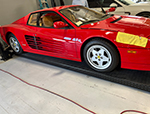
“Selling my Ferrari to Alex was the easiest transaction I have ever done. He made it so easy all over the phone. He had transportation come and pick up the Ferrari, paperwork was extremely easy. Alex is the best!”
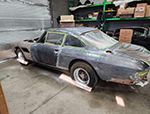
“I reached out to Alex to tell him about a 1966 Ferrari project we had here. He was very interested in the car and making sure the whole process was smooth. He is a joy to deal with. We build high end cars for some great clients, and Alex will be in our “circle” for helping with future dealings!”
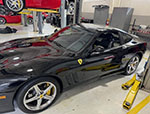
“Outstanding, got the funds before they got the car!”
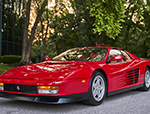
“Excellent!”

“The entire staff is very knowledgeable and efficient. Alex negotiates quickly and settles the account the same way. These people go right to the point and keep their word. I have used them twice with no problems.”
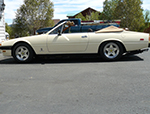
“I had been thinking of selling my Ferrari for sometime, but had reservations about all the work & time required to get the car ready to post a good ad on one of the auction sites. Then I read an article on Hemmings, ” How to Sell a Classic Car That Needs Work”. It made a lot of sense for my particular situation, so I inquired about it. Alex contacted me the same day, we discussed the condition of the car, talked about value, came to mutual agreement with out any arm twisting. The wire was in my account the next day and the car picked up a couple days later. I have no reservations about doing another deal with him on another car that I am looking to sell. It was a positive, professional experience!”

FAQs About Project Ferraris
Why do “project” Ferraris often sell for significantly less than restored examples?
A: Project Ferraris typically sell for 30-60% less than fully restored examples, making them accessible entry points for enthusiasts who want to own a piece of Ferrari history without the premium price tag of a concours-ready vehicle.
What is the biggest concern when evaluating a Ferrari project car?
A: Rust is the biggest enemy of Ferrari project cars. What appears as minor surface rust can conceal serious structural damage, particularly in chassis members and body panels, potentially quadrupling your restoration costs. Areas like the floors, inner fenders, and sill boxes are particularly vulnerable on vintage Ferraris.
How do market trends affect Ferrari project car values?
A: Ferrari restoration markets follow generational nostalgia cycles. Models popular when buyers were teenagers tend to appreciate most significantly. For example, 308/328 models from the Magnum P.I. era surged in value as Generation X gained purchasing power, while earlier 250 and 275 models rose with Baby Boomer wealth.
How important is “numbers matching” when purchasing a project Ferrari?
A: For Ferraris, numbers matching (original engine matching the chassis) can increase a car’s value by 30-50% or more. Ferrari engines are particularly crucial, as period-correct replacements are exceptionally rare and expensive. Always verify engine numbers against the Ferrari Classiche documentation before purchase.
Beyond financial investment, what benefits do Ferrari project car restorations offer?
A: Many Ferrari project enthusiasts report significant psychological benefits from the restoration process. Working with your hands on precision Italian engineering and solving complex mechanical puzzles provides a therapeutic escape and profound sense of accomplishment when hearing that first start-up of a Ferrari V8 or V12 you’ve personally rebuilt.
How does parts availability impact Ferrari project car selection?
A: Discontinued Ferrari parts have created entire specialist industries. Some artisans build careers reproducing single components for specific models, like carburetors for 250 GTs or interior switches for Dinos. Before purchasing a project Ferrari, thoroughly research parts availability as some components can cost more than entire mainstream classic cars.
How has technology changed the Ferrari restoration community?
A: The internet has transformed Ferrari project car culture, with model-specific forums containing decades of collective wisdom. Platforms dedicated to models like the 308, Testarossa, and 365 GTB/4 “Daytona” provide invaluable troubleshooting advice, parts sources, and technical documentation that previously required specialized shop knowledge.
What is the “20-footer” concept in Ferrari restoration?
A: The “20-footer” concept describes project Ferraris that look stunning from 20 feet away but hide imperfections under attractive cosmetic restorations. Many Ferraris have received quick resprays and interior work to attract buyers, while hiding mechanical issues or structural problems that aren’t immediately visible during brief inspections.
How do production numbers affect Ferrari project car values?
A: Ferrari values often reflect production numbers in unexpected ways. While rarity typically increases value, ultra-limited production Ferraris like the 365 California or certain 250 variants can become nearly impossible restoration projects due to parts scarcity. Sometimes, higher-production Ferraris like the 308 GTB/GTS represent better project investments.
Has the approach to Ferrari restoration changed in recent years?
A: “Patina” (natural aging of surfaces) has become increasingly valued in the Ferrari community, shifting some projects from full restoration to preservation and mechanical rebuilding. Original, unrestored Ferraris with honest wear now often command premium prices over freshly restored examples, particularly for 1950s-70s models with documented histories.
At what point do most Ferrari project cars stall?
A: Many Ferrari project cars are abandoned at approximately 80% completion when enthusiasm wanes and the final, tedious details remain. This creates opportunities for buyers to find nearly-complete projects, but beware—that final 20% often includes the most challenging, time-consuming aspects like interior trim fitting, electrical troubleshooting, and Ferrari-specific calibration work.
What challenges arise with paint matching on classic Ferraris?
A: The definition of “matching paint” varies wildly with Ferraris. Original factory Rosso Corsa, Giallo Fly, or Blu Tour de France paint codes often look noticeably different on modern materials than they did in period. Authentic restorations may require specialized paint mixing and application techniques to truly match factory finishes from different eras.
How much time does a typical amateur Ferrari restoration require?
A: Amateur-restored Ferraris typically require 1000+ hours of labor, explaining why professional Ferrari restorations often exceed $100,000. Complex models like the 512 BB or 365 GTB/4 can easily double this time investment, particularly for first-time restorers facing the complexities of Ferrari-specific systems.
What debates exist around modernizing classic Ferraris?
A: Modern technology integration creates philosophical debates in the Ferrari community. Adding Bluetooth, fuel injection, or modern brakes to vintage Ferraris improves usability but impacts authenticity and potentially value. The Ferrari Classiche program strictly certifies originality, while “restomod” Ferraris prioritize drivability and modern performance.
How does documentation affect Ferrari project car values?
A: Vehicle history documentation dramatically affects Ferrari values. Finding original build sheets, service records, or ownership chains can increase worth substantially—sometimes by 25% or more. Ferrari’s factory Classiche certification, which verifies authenticity and matching numbers, has become increasingly important for investment-grade vehicles.
What is the “barn find” phenomenon in the Ferrari world?
A: The “barn find” phenomenon has created a romanticized treasure hunt aspect to the Ferrari hobby. Discovering long-stored original vehicles like forgotten 250 GTEs or early Dinos in original, untouched condition represents the ultimate find for enthusiasts. Documented barn find Ferraris often command significant premiums due to their originality and potential.
How do Ferrari projects impact family relationships?
A: Ferrari project cars often create family legacies, with many restorations becoming multi-generational endeavors passed from parents to children. The knowledge transfer of working on complex Ferrari systems creates powerful bonds, and many current Ferrari collectors trace their passion to childhood memories of helping restore a family project car.
How do classic Ferrari registration laws vary by location?
A: Classic Ferrari registration laws vary dramatically by location. Some regions offer historic plates with usage restrictions for vintage Ferraris, while others may require modern emissions standards for models from the 1970s-80s. California’s strict emissions requirements can make registering certain fuel-injected Ferraris particularly challenging, while European countries often have age-based exemptions.
What psychological factor keeps owners investing in challenging Ferrari projects?
A: The psychological phenomenon of “sunk cost fallacy” often keeps owners pouring money into financially unviable Ferrari projects. After investing significantly in rare parts or specialized work, many owners continue funding restorations even when costs exceed potential market value, particularly with challenging models like the 400i or early flat-12 engines.
How has the Ferrari restoration market evolved technically?
A: The Ferrari restoration market has split between traditional mechanical skills and digital knowledge. While earlier Ferrari models require traditional craftsmanship, computerized diagnostics become necessary for 1980s-2000s “modern classics” like the 348, F355, and 550 Maranello. This has created distinct specialization within the Ferrari restoration community.

